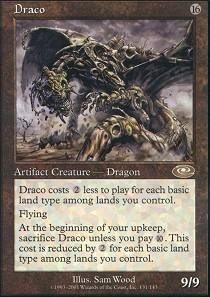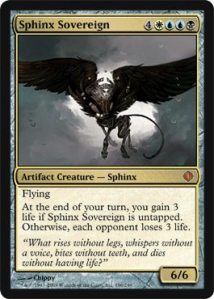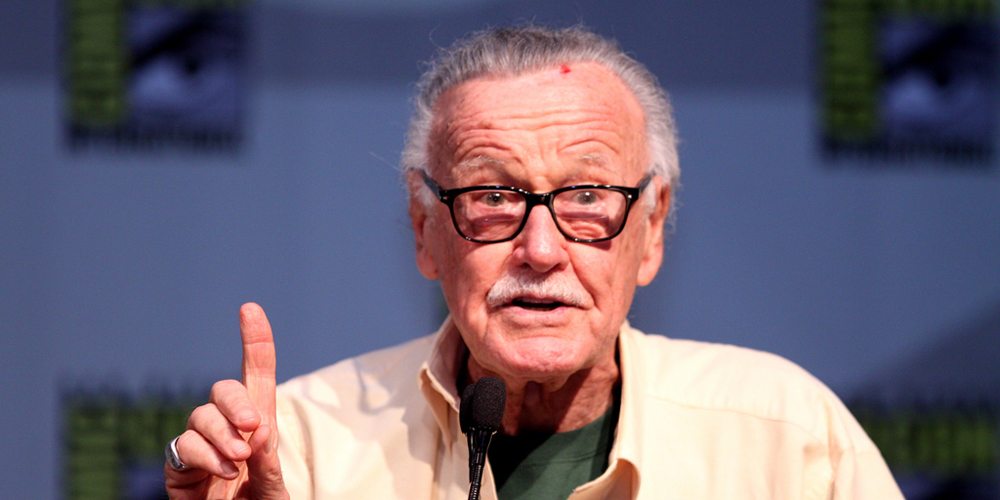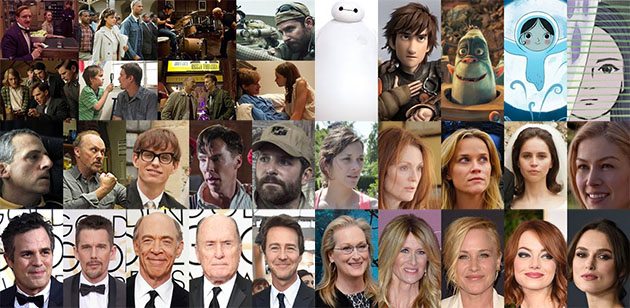In the series introduction, I discussed why to play Trading Card Games (TCGs), why collect cards, and what TCGs can teach kids. Now we will explore the actual cards, decks, and how to play.
In most TCGs, each card has a “cost,” “type,” “speed,” “color,” and “rarity.”

The cost of a card is determined uniquely in each game. In some games, the cost is turns, as in, some cards may only be played after the third turn. In games like Magic: the Gathering (M:tG), the cost is determined by the power of the card. Rarely, a card will cost 0. Just as rarely, a card such as Draco may cost 16! These costs are paid for by “tapping” cards to produce mana. (Tapping is a mechanic which uses up a card until the beginning of your next turn.)
The type of card has to do with what the card actually does. In M:tG, for example, there are creatures, artifacts, land cards, sorcery cards, etc. Each of those may have sub-types. Creatures can be humans, goblins, angels, elves, the list goes on and on.
The speed of a card affects when you can play a given card. Most cards have a default speed which dictates when the spell can be played. The exceptions are “instant” speed cards. Those cards may be played at any time, even on another player’s turn! These cards may put a new creature into play, make creatures in play stronger, destroy the opponent’s creatures, and so on. Sometimes, cards that would normally only be playable on your own turn have effects that let them be played at other times. This can really surprise your opponent, and add a layer of complexity to a player’s strategy.
The color of a card is also universal and a critical part of deck building. In most games, there are 5 – 7 colors. In M:tG, there are 5 colors, and “colorless” cards. In Yu-Gi-Oh! There are 7 “attributes” in the place of colors.
These colors are normally indicative of the theme of the card. In M:tG, Black cards normally rely on death, poison, and sneak attacks. Green cards are all about big creatures that can deal damage despite the opponents defenses. Red cards are about dealing damage directly, often ignoring defense in the pursuit of a no-holds-barred barrage of damage. White cards are all about healing, protection, and strong defenses. Blue cards are about manipulating the field, keeping your enemies frustrated as you penalize them for everything they do.

Image: Wizards of the Coast
The rarity of a card is exactly what it sounds like. How rare is your card? In many games, there is a colored symbol on the right hand side of the picture. The color of this symbol tells you how rare that card is. Black is common, silver or white is uncommon, gold/yellow is rare, and orange or orange/red is “mythic rare.” Cards that are more rare have better effects, usually cheaper than comparable commons.
To build a deck, the player must know which colors they will be using, how many cards they will use, and which types they will use. The speeds they use are dependent on their combinations. Let’s explore some of the most common combinations, and basic strategies for building those decks.

For a Green and White deck, players often focus on healing, and producing a large number of creatures. Both Green and White cards can provide those effects, and multi-colored cards which are both Green and White often provide those effects in powerful ways. “Trostani’s Summoner” costs 7 total, and provides 4 total creatures! “Heroes’ Reunion” costs only 2, and heals any given player by 7! Each of these cards is very strong for it’s cost, but each requires the ability to produce both White mana and Green mana to play them.
For a Blue and White deck, players often focus on getting past an opponents defenses by any means possible. Sometimes by making their creatures “unblockable” and/or allowing them to fly past an opponent’s defenses. Other times, blue or white cards will allow a player to cripple an opponent’s creatures, leaving them without any defenses at all.
For Blue and Black decks, players may focus on utilizing the graveyard (the place cards go after they have been destroyed or used up). By discarding a lot of cards from their decks (and doing the same to other players) Blue/Black decks allow the player to use cards from any of the graveyards as if they were in that player’s hand. This is often very risky, since the player must draw certain cards to make this work, and some of them may be put into the graveyard because of the effects of other cards!

As you can see, there are many strategies. These three are some of the common ones, but there are dozens of color combinations, and for each of those combinations, there are several strategies available. Some players tend to focus on one theme throughout all of their decks, which makes them predictable, but also allows them to understand the aspects of those strategies very well.
For example, I focus on healing myself to a ridiculous degree. With Green/White I focus on giving myself an army to keep me from taking damage, while I heal myself for each of those creatures. In my Red/White/Green deck, I focus on healing myself by dealing damage. For my Blue/White deck, I focus on playing every card twice, and keeping my opponents locked down while I heal myself by doing damage to them. Opponents know that when they play me, they can expect a lot of healing, but they don’t always know what to expect from the damage I will do.
Once you have a firm idea of what you want from your deck, it’s time to assemble that deck. Each player has a different way to make their deck strong, but I have some tried and true tips for beginners.
Make sure you can pay for your cards. If you have many high cost cards in your deck, you have a higher chance of drawing many cards that you cannot use for a long time. In M:tG, you need plenty of land cards to provide your mana. You also need the correct colors, as seen in the image below.

Image: Wizards of the Coast
Make your cards compliment each other. If some of your cards rely on your creatures making it into the graveyard, make sure you have ways to get those creatures in the graveyard. If you plan on making your creatures disposable, give yourself rewards for them dying.
Make your deck consistent, and tight. Most games require a minimum of 60 cards, with no more then 3 or 4 of each card in your deck. If you can have 4 of a given card, make it a versatile and useful card, and use 4 of them in that deck. If you have a 60 card deck, and you use 24 land cards, then you should aim to have about 8 or 9 different cards in your deck. Try to keep your total down to the minimum. This way, your deck is predictable, and you can build strong strategies around those cards.
Play-test. Practice playing your deck with friends. Learn how it feels. If you have too many land cards, and you don’t draw enough others, reduce the amount of land. On the other hand, if you are “mana-screwed,” meaning you do not draw enough lands, then you may add more lands in.
Another way of practicing with your deck is to Goldfish. This is where you play with no opponent, and instead assume that your opponent has cast a 2/2 creature each turn. This allows you to see how much land you draw, and how predictable your results are. This method isn’t as popular as it once was, but it is still the method used in the Duels of the Planeswalkers online games.
The most important part of TCGs is playing. Let’s go over the basics, and we will go into more detail in a later post.

Image: Wizards of the Coast
At the beginning, the players decide who goes first. The most commonly used method is to roll two 6-sided dice. The player with the highest total chooses who goes first. Each player draws 7 cards. If they are pleased with the cards they have drawn, then they will say “keep” as in “I want to keep my hand.” If they dislike the hand they have drawn, they may mulligan. There are many types of mulligan, so we will go into that later.
After each player “keeps,” the first player takes their turn. Usually, this is quick and easy. The first player does not usually draw a card, so they must play from their opening hand. After they have taken their turn, play progresses clockwise. For specifics on how to play the TCG you like, please make sure you check the rules included with your cards.

A player loses the game when they no longer have “health” or cannot draw a card when they are supposed to. There are many strategies for increasing your own health or decreasing another player’s. There are also many strategies for “milling” another player’s deck. This means you make them discard a lot of cards, forcing them to lose without damaging them. The term “milling” comes from the infamous card Millstone, the first of its kind.
I’ll leave it at that, before this post grows any longer. Stay tuned for:
- Tips for trading and collecting
- How to keep games fun and friendly
- Formats and interesting variant rules
- Pro tips and how to make your deck more effective
Previous posts:
TCGs for Dummies – An Introduction




I have played some Magic (friendly, not competitive) in my day, but I’ve been completely won over by the new version of Netrunner. If you haven’t checked it, I highly recommend you do so! The first part of this article kind of sums up my feelings about A:NR vs MtG: http://stimhack.com/why-win-more-is-not-a-problem-in-netrunner/ (although then it gets into another discussion which is less on point)
I like the idea of articles dedicated to TCGs, but this series so far seems to be nothing more than an MtG primer. I don’t play any TCGs (currently enjoying A:Netrunner and Star Wars LCGs), but I’m sure there are more out there. If the target audience is non-TCG players, maybe discuss TCGs in more general terms? Maybe expand to discuss the differences between TCGs and LCGs?
Anyway, curious to see where this goes. Thanks.
Have to agree that for a first article claiming to be an overview… the diversity was lacking. A few nods to Pokemon and Yugioh, but there are dozens of others out there. Some don’t really follow the generalities proclaimed from M:tG either.
I’ve played Magic on a casual level since Ice Age. Since my introduction to tcgs, I’ve played a load of others tcgs on a casual and sometimes competitive level. I’m very interested in the Hex tcg. I feel it is going to be analogous of getting in on Magic at the ground level. The game is almost a direct rip of Magic, yet it throws enough differences through the use of mechanics only a digital tcg can pull off that makes it a draw for me.